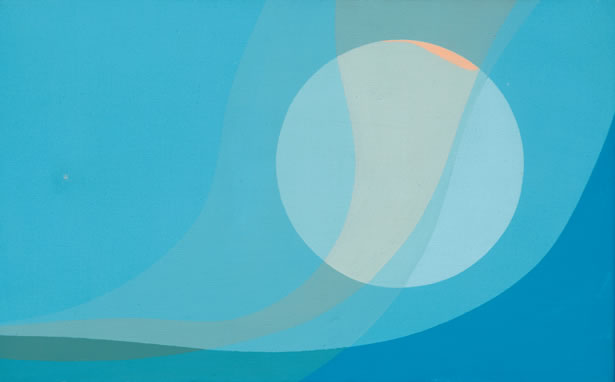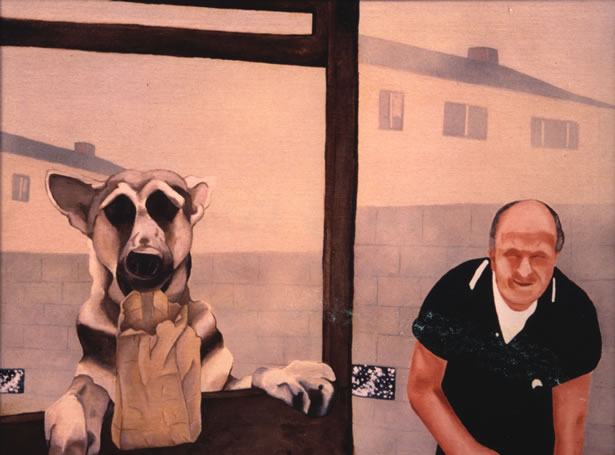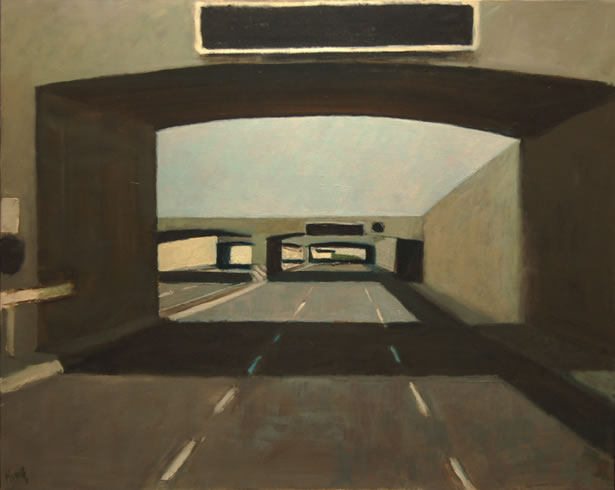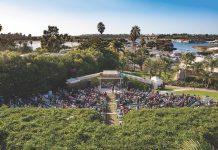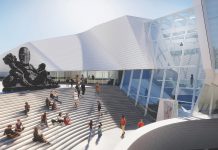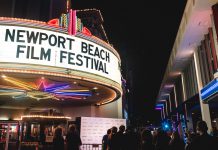Laguna Art Museum’s permanent collection
The final leg of “Pacific Standard Time” concludes with “The Postwar Era,” a rare look at select pieces from Laguna Art Museum’s permanent collection. – By Jennifer Pappas
Amidst the drone of power tools and raucous hammering, I’m desperately trying to hear what Malcolm Warner, the spruce new director of Laguna Art Museum has just said in response to my question. I covertly twist my digital recorder so it points closer to Malcolm and further from the jean-clad men installing new artwork in the adjoining room. It’s a Thursday afternoon and I’m standing with Malcolm, Janet Blake and Grace Kook-Anderson—curators of “The Postwar Era”—a few feet in front of five works of art they’ve pulled and leaned against the wall for me to see.
“The Postwar Era: From the Collection, 1945-1980” celebrates this explosive time period with 60 works from Laguna Art Museum’s permanent collection. The exhibition is a follow-up to “Best Kept Secret: UCI and the Development of Contemporary Art in Southern California, 1964-1971,” and rounds out the Getty’s roving regional initiative, “Pacific Standard Time: Art in L.A. 1945-1980.” The show is perhaps the most personal for Orange County: Not only does it explore the museum’s permanent collection in greater depth, but several of the featured artists were long-time residents of Laguna and Newport Beach.
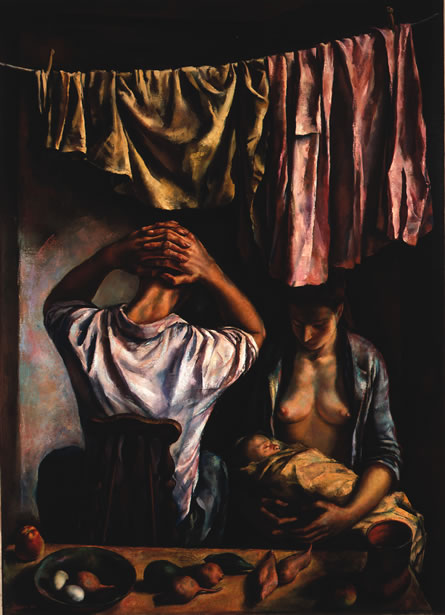 After months of trolling through the archives, Janet and Grace are poised to display works that have rarely (if ever) been shown since they came into the museum’s possession. The exhibition documents the kinetic shifts—representational to abstract to avant-garde to contemporary—that took place post-World War II, marking a pivotal moment in art history. “It’s been great for me as the new boy, reassessing what we have in the collection” Malcolm says. “The final selection will be a combination of much-loved items mixed in with things that even a regular visitor might not have seen before. It covers a lot of ground, and there are [many] stylistic contrasts, but we think it will hang together beautifully as a show.”
After months of trolling through the archives, Janet and Grace are poised to display works that have rarely (if ever) been shown since they came into the museum’s possession. The exhibition documents the kinetic shifts—representational to abstract to avant-garde to contemporary—that took place post-World War II, marking a pivotal moment in art history. “It’s been great for me as the new boy, reassessing what we have in the collection” Malcolm says. “The final selection will be a combination of much-loved items mixed in with things that even a regular visitor might not have seen before. It covers a lot of ground, and there are [many] stylistic contrasts, but we think it will hang together beautifully as a show.”
In the midst of whittling down the 3,000-plus works that comprise the museum’s entire collection, Grace was delighted to find a few surprises along the way. “My personal favorite—the one that temporarily lives in my office—is the little Helen Lundeberg piece [Moonscape],” she tells me. “I’ve come to learn more about her and other collectors who own her work, so it’s been exciting to see those connections—not only as a woman artist, but as a surrealist and a wonderful colorist. There are certainly personal aspects of this exhibition that sing for me.” Another source of excitement is John Altoon, a Los Angeles native known for his machismo and broad, gestural brushstrokes. Several Altoons will be shown here for the first time.
For Malcolm, a transplant from England, one of the biggest highlights of the exhibit is Roger Kuntz. “He’s a great painter that I confess I’ve never heard of before I came here and took this job,” he says, “Coast Highway Culvert” (1960) propped in front of us in the vacant gallery. “What makes him great is that he’s so ingenious in balancing the observation of a real place—we can identify what this spot is—with the idea of making an intriguing, abstract composition from what he sees in front of him. It hovers perfectly between representation and abstraction, which I think is a fascinating area to explore. He’s a master at it.” Janet is quick to chime in: “This piece is actually so specific, we’re certain it’s the culvert that leads into Crystal Cove off of PCH. That makes it a really unique Orange County contribution.”
Despite the obvious contrasts, the show achieves continuity through mood. What starts off as post-war blues—exemplified in Francis De Erdely’s figurative work, “Day’s End”—morphs into something quite different by the time 1980 rolls around. “You get a sense of gloom lifting,” Malcolm explains. “An increasing sense of joyful exploration. From Kuntz’s quasi-abstraction to the deeply committed, total abstraction of Helen Lundeberg to the more abstract expressionist, gestural action painting of John Altoon. … It will be a show that has a change of mood from beginning to end.”
The show is also revealing for what it’s left behind, how it’s influenced contemporary artists and shaped the course of modern art. More importantly, the long overdue salute to Southern California art is poignant validation for those who argue against the idea that “real” art only happens in New York City. In fact, the success of “Pacific Standard Time” may have single-handedly put the timeworn East Coast versus West Coast art dispute to bed—for good. Malcolm hopes so: “It’s surprising to me that in California they’re still asking, ‘how do you feel about California art in relation to New York?’ The rest of the world doesn’t obsess about that anymore. For the rest of us, California art is wonderful, lively, different and interesting in itself. … That debate is an unfortunate hangover from the past really. ‘Pacific Standard Time’ has done a lot to counteract that, so maybe we can finally stop asking that question.” NBM


